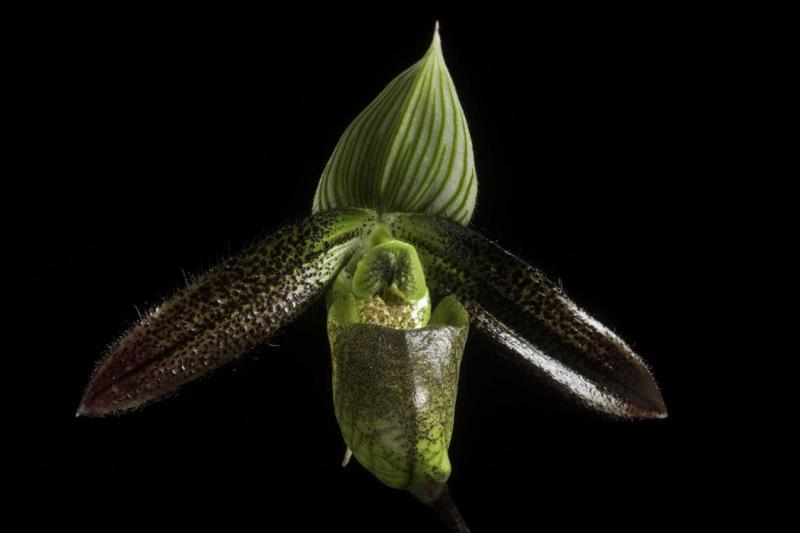Paphiopedilum wardii
Also known as: Ward's Paphiopedilum or Paphiopedilum wardii var. alboviride Paphiopedilum wardii f. ying-xiangii Paphiopedilum wardii h.f. atrobrunneum Paphiopedilum wardii f. alboviride Cypripedium vernayi Cypripedium wardianum Paphiopedilum multifolium Paphiopedilum wardii h.f. album Paphiopedilum brevilabium Paphiopedilum burmanicum Paphiopedilum microchilum Paphiopedilum wardii h.f. alba in the subfamily: Cypripedioideae
Native to: China Myanmar
General Information
Ward's Paphiopedilum is a cool to warm growing orchid belonging to the sub family Cypripedioideae native to China and Myanmar. It is named after the English Plant Collector in the 1900's.
Plant Description
Each new growth has numerous lance shaped oblong shaped leaves that grow to 5.5-17cm long. Pseudobulbs grow to 5cm
Flowers
A single blossom appears during Winter
Blooming Season
- Winter
Substrate(s)
- Coarse
Climate
Grows at low to high elevations. Rainfall ranges from 5mm to 1013mm per day, heaviest in July and lightest in December. Humidity ranges from 85% to 94%, highest in August and lowest in April. Temperature ranges from 1C to 22C, highest in August (17C to 22C) and lowest in January (1C to 10C).
Watering
These orchids prefer a wet-dry cycle between waterings, they should be watered frequently but only when the moisture is approaching dryness, where the pot feels light and/or the media looks dry. Keep an eye on mounted orchids in warm weather as they may dehydrate quickly.
Fertiliser
These orchids do not need to be regularly fertilised and roots may be sensitive to salt build-up, dying back and therefore impairing the plants growth or even killing it.
If fertilising, use half to quarter of the recommended amount of fertiliser. If they receive fertiliser as part of a collection, be sure to flush out the pots regularly with fresh water and monitor the roots by checking how much resistance is given by the plant when nudged in its pot or mount. If the plant becomes wobbly or loose, repot in fresh mix or rinse the media/mount thoroughly and do not fertilise for at least 3 months.
Be sure to flush out excess fertiliser by running water through the media regularly year round. Use a high Nitrogen fertiliser year round. Use a high Phosphorous fertiliser during Summer and Winter.Potting
Repotting is best done annually.





















